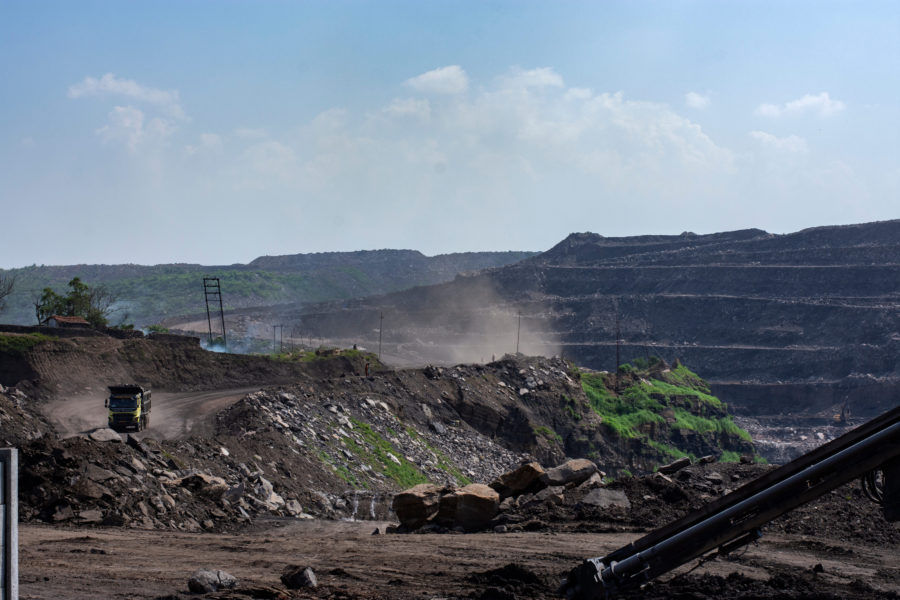South Africa teeters towards recession on labour dispute
 The latest attempt to end South Africa’s 21-week platinum strike has failed, pushing the country towards a recession and increasing the odds the sector will be smaller and more mechanized when it eventually resumes operations.
The latest attempt to end South Africa’s 21-week platinum strike has failed, pushing the country towards a recession and increasing the odds the sector will be smaller and more mechanized when it eventually resumes operations.
More than 70,000 South African platinum miners have been on strike since late January and months of negotiations have done little to bridge the gap between miners’ wage demands and the producers’ offer. The striking miners work for Anglo American Platinum — a subsidiary of Anglo American (LSE: AAL; US-OTC: AAUKY), Impala Platinum Holdings (LSE: IPLA), and Lonmin PLC (LSE: LMI) — and the idled operations represent 60% of South Africa’s platinum and palladium capacity.
Workers are demanding the basic wage be doubled to 12,000 rand (US$1,200) per month within four years. The producers are offering an increase of up to 10% over four years, which would raise the overall minimum pay package to US$1,200 per month by 2017. However, this would include allowances for necessities such as housing. The union opposes a housing allowance.
In the meantime, the three producers estimate the strike has so far cost the industry more than U$2 billion in lost revenues and cost employees more than $900 million in lost wages.
Those lost wages have hit striking workers hard, especially because many platinum miners use their wages to support extended families of eight or ten people. And the ripple effect is hurting the entire country: South Africa’s economy shrank by 0.6% in the first quarter of the year, its first contraction since 2009, and analysts point to the strike as a key cause.
Natural Resource Minister Ngoako Ramatlhodi said that, after five months without pay, miners “have in effect been reduced to beggars. The situation is untenable. The companies are also under pressure. The economy is suffering — the latest GDP figures attest to that.”
Efforts are being made to find a resolution. After winning re-election in late May the national government stepped into the dispute, setting up guided negotiations.
However, after two weeks of failed progress the government withdrew from the wage talks on June 9.
Describing the parties’ attitudes at the bargaining table, Ramatlhodi said the government could “take them to the river but could not make them drink.”
The metal market reacted immediately. Palladium futures for September delivery gained 1.4% on June 9 to reach a 39-month high of US$853.50 per oz., while platinum futures for July delivery rose 1.8% to reach US$1,481.10 per oz. in a fifth straight gain, the metal’s longest rally since the start of April.
Until recently, stockpiled supplies had insulated the market from the strike and kept prices stable. Now those stockpiles are starting to wear thin and analysts expect recent price upswings to continue, especially because the platinum and palladium markets are already undersupplied.
London-based chemicals and metals company Johnson Matthey estimates palladium demand will exceed supply by 1.6 million oz. while platinum demand will top supplies by 1.2 million oz. The company, which produces a third of the world’s catalytic converters, says 2014 will mark the third straight year in which demand for the metals has outstripped supply.
Platinum and palladium are primarily used in catalytic converters, though jewelry demand is also notable.
South Africa produces 40% of the world’s platinum and palladium. With 60% of that capacity having been idled, the sector has lost 30% of global output for the year.
The producers say they are still committed to a negotiated settlement but “will now review further options” available to them.
The Association of Mineworkers and Construction Union (AMCU), which represents the majority of the striking miners and which led the charge to go on strike, said they made concessions at the bargaining table.
“AMCU made many concessions,” said AMCU president Joseph Mathunjwa in a statement. “We moved twice to make employers move closer to us.” Mathunjwa conceded that the union did not, however, compromise its basic wage demand.
For now, talks are stalled. The only official path forward from here is for the dispute to go to a labour court for an arbitrated decision, a process with no set timetable and no guarantee of producing an enforceable result.
And the parties remain far apart.
On a joint fact sheet, the miners say wages amount to between 55% and 60% of their production costs. The companies also say wages at their mines have increased by levels well in excess of the consumer price index and note that miners earning an average basic wage already earn “almost double the average entry-level wage payable in South Africa.”
Last week in London, Anglo American CEO Mark Cutifani described the strike as “a fight we had to have.”
“What is being asked of us is unsustainable,” Cutifani was quoted as saying at a mining club dinner. “The productivity in the platinum sector is one-tenth the productivity in the Australian sector and we are paying one-fifth the wages.”
Independent economists Gilad Isaacs and Andrew Bowman came to a different conclusion. After a recent study examining the platinum industry over the last 14 years, Gilad and Bowman say producers are positioning the affordability debate only the context of the last two years, when prices have declined and costs increased. However, a longer timeframe gives a different perspective.
“It is remarkable how well the companies did, on average, over the last 14 years (in particular during a boom period between 2000 and 2008), how their shareholders raked it in, and how labour got a very thin slice of the pie,” Gilad wrote in an article for AllAfrica. He notes Amplats, Implats, and Lonmin enjoyed operating profits of 37%, 44%, and 41%, respectively, between 2000 and 2008, and shareholders enjoyed hefty dividends and share price increases as high as 12-fold, while workers reaped “few benefits”.
The last few years, however, have not been so prosperous. Wage increases and higher electricity rates boosted costs just as platinum and palladium prices slid 25%.
Now, as the strike drags on, producers are eyeing mechanized mining with increasing attention. They also warn that the longer the strike, the more jobs will be lost because it will be uneconomic to restart mining in older shafts.
“The longer the strike goes on, the more likely shafts will close,” said Ramatlhodi. “I suspect there will be some job losses.”
More News
Gates, Bezos-backed critical minerals explorer to ‘go big’ on Congo – report
April 27, 2025 | 08:27 am
{{ commodity.name }}
{{ post.title }}
{{ post.date }}



2 Comments
mickeyt
If you are invested in this basket case economy, SELL NOW and get out while the going is good !!!
Johnrolce
Of course AMCU leaders are payed regardless. That’s why they can be tough.